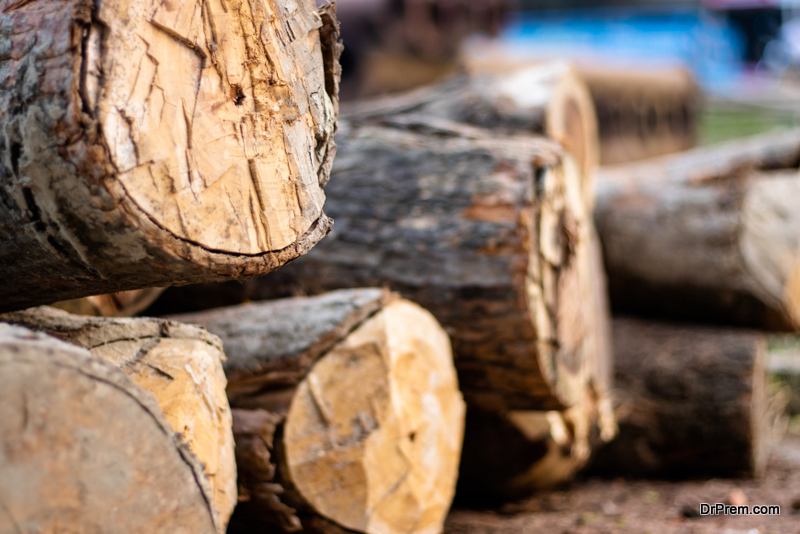In many parts of the world today, there is a growing realization and acceptance that our planet is not just going to take care of itself. After decades of skepticism and prevarication, governments around the globe are pushing for more sustainable practices, the eradication of fossil fuels, and the conservation of our remaining green spaces. Environmental concerns are no longer the purview of the left wing. It no longer draws suspicious looks when you tell people that you’re vegan or that you do your shopping at a plastic free shop – at least, most of the time it doesn’t.
Then there’s the issue of paper (or ‘trees’, as they are sometimes referred to in the wild). If you live in a developed nation today, and especially if you work in an office, you probably have less paper to deal with on a day-to-day basis than your parents did. People in your workplace are less likely to print huge wads of paper when they can send you a PDF instead, and even most utility bills these days come straight to your email. With everything going online, you’ll sometimes hear it said that we are moving towards becoming a paperless society.
It may surprise you to learn that, globally, paper consumption is actually growing. Far from following the Sumatran Rhino or the Indochinese Tiger into extinction, paper and cardboard are thriving.
Why is Paper Consumption Growing?
 First, let’s take a look at where and how paper consumption is growing. In many developed countries, paper consumption is actually on the decline. In fact, between 2006 and 2009, paper consumption in North America actually declined a staggering 24%: That’s a quarter of all paper consumption in just 3 years. Much of this has been due to the decline of print media like newspapers and magazines, as well as books.
First, let’s take a look at where and how paper consumption is growing. In many developed countries, paper consumption is actually on the decline. In fact, between 2006 and 2009, paper consumption in North America actually declined a staggering 24%: That’s a quarter of all paper consumption in just 3 years. Much of this has been due to the decline of print media like newspapers and magazines, as well as books.
However, in other parts of the world, paper consumption has continued to grow. There has been a marked increase in paper consumption in China, for instance, which overtook the US for the first time back in 2009.
But we cannot place all the blame on countries like China. While China is using more paper on the whole, the US still uses by far the greatest amount of paper per capita, almost 5 times the global average. The average US resident consumes almost 6 times the amount of paper of the average Asian, and, incredibly, 30 times the amount of the average person in Africa.
Let’s consider that in concrete amounts. The average person in the USA uses between 200 and 250 kilos of paper every year. Compare this with just 5 kilos for the average Indian. Now consider that for every kilo of paper, you need 2-3 kilos worth of trees. If every person on the planet consumed 200 kilos of paper per year, there would not be enough trees in the world to sustain them.
In short, while paper consumption is on the decline in many western countries, that decline is not happening nearly quickly enough, and the industry is actually ramping up in many parts of the world. In short, the answer to the question “are we really becoming a paperless society” is a resounding no.
What Are the Effects of All this Paper Consumption?
We all know that paper is made from trees, and most of us are somewhat familiar with the environmental deterioration associated with wide-scale deforestation. Trees absorb and store carbon dioxide, which they then convert into oxygen – this is why when you sometimes hear people refer to the Amazon rainforest being referred to as “the lungs of our planet,” they are not just using a flowery metaphor. They quite literally enable us to breathe. When trees are cut down or even disturbed, they release all that CO2 into the atmosphere. The deforestation and damage to the delicate ecosystem of naturally occurring forests that has been caused by human activity is responsible for around 10% of all global warming.
What many people may not consider when they think of the environmental damage caused by the paper industry is the amount of resources used and waste created in the actual manufacturing process. For instance, to create a single sheet of A4 paper, you need 10 litres of water, making the paper industry the leading industrial consumer of water in Western countries.
What’s the Answer?
 While we certainly have a long way to go, the relative decline of paper consumption in Western countries is encouraging. While paper is relatively easy to recycle, 55% of all paper is still made from newly cut trees. Each tonne of recycled paper saves 17 trees, 4,000 kilowatts of energy, and a staggering 26,500 litres of water. By only using recycled paper products, you can have a real, positive impact on our environment.
While we certainly have a long way to go, the relative decline of paper consumption in Western countries is encouraging. While paper is relatively easy to recycle, 55% of all paper is still made from newly cut trees. Each tonne of recycled paper saves 17 trees, 4,000 kilowatts of energy, and a staggering 26,500 litres of water. By only using recycled paper products, you can have a real, positive impact on our environment.
Article Submitted By Community Writer


